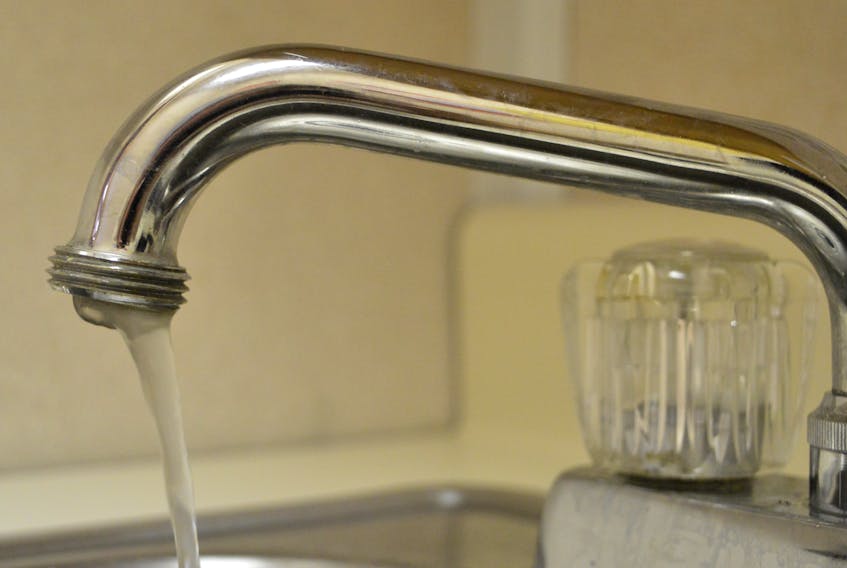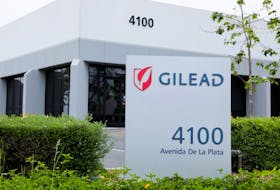NORTHERN PENINSULA, SOUTHERN LABRADOR, N.L.
Recent comments by Newfoundland and Labrador’s minister of Municipal Affairs and Environment suggest dozens of the province’s communities, including 20 on the Northern Peninsula and in southern Labrador, should be informing residents about the levels of disinfection byproducts in their water supplies.
“If you are above the Health Canada standards (which have been the same since 2006), by God you should be informing your residents that is the case,” said Minister Graham Letto. “For liability and accountability purposes, you should be doing that and municipalities have to take some responsibility in that.”
At issue are readings of trihalomethanes (THM) and haloacetic acids (HAA), which are created when organic compounds in the environment react with chlorine used to kill microorganisms in drinking water supplies.
Exposure to high levels of THMs and HAAs have been shown to cause cancer in lab rats. There is also some evidence that long-term exposure to smaller doses may elevate cancer risk in humans and one preliminary study showed THMs may be associated with birth defects, although no causal link has been scientifically established.
Health Canada guidelines set the minimum acceptable level for THMs at 100 micrograms per litre (ug/l) and for HAAs at 80 ug/l. A provincial government report for winter 2018 showed running averages for 20 Northern Peninsula and southern Labrador communities ranged from just barely over the guideline (Anchor Point, 106.25 THMs and 82.2 HAAs) to more than five times (Port Hope Simpson, 380 THMs and 530.33 HAAs).
Letto suggested communities concerned about these byproducts could apply for funding under the federal government’s new $559 million infrastructure program to build new water treatment plants.
One of the towns on the Northern Peninsula that showed moderately elevated levels of these byproducts is St. Lunaire-Griquet at 275 THMs and 247.07 HAAs.
However, Mayor Dale Colbourne is confident the town’s drinking water is safe.
“Our town staff is very diligent with our water,” she said in a text. “We are tested daily by the town staff and monthly by the Department of Health. If we ever get warnings they are certainly passed on to the town’s residents.”
She pointed out that providing safe drinking water is a top priority and balancing act for municipalities and that not chlorinating water is far more dangerous than slightly elevated levels of disinfection byproducts.
St. Anthony also registered elevated THM (165) and HAA (161.43) levels. Curtis Richards, the town manager, said the municipality has looked at water treatment options that are not currently feasible and is examining whether it can safely reduce chlorine input. The topic will be on the agenda for the next regular council meeting on Dec. 11.
For residents who are concerned, the provincial Department of Health and Community Services has a fact sheet with tips for things people can do at home to reduce levels.
“Town water is generally safe and is tested on a regular basis,” the fact sheet says. “If you are concerned about the possible health risks from high levels of disinfection by-products like THMs and HAAs, you may choose to install a home water treatment unit, or you may drink approved well water, or bottled water.”
The information suggests some home drinking water products with activated carbon filters can reduce disinfection by-product and chlorine levels. It says people should look for labels that say the product is NSF Standard 53-compliant.
THM and HAA levels in community water supplies for 20 Northern Peninsula and southern Labrador communities, running averages, Winter 2018
Community THMs HAAs
St. Anthony 165 161.43
Anchor Point 106.25 82.2
Bellburns 129 82.75
Conche 163 136.95
Cook's Harbour 167.50 133.77
Flower's Cove 160.25 126.90
Goose Cove 146 60
Gunners Cove 237.5 184
Hawke's Bay 205 132
Main Brook 167.50 182.88
Mary's Harbour 239 203.27
Nameless Cove 170 128.30
Plum Point 264.67 108
Port Hope Simpson 380 530.33
Port Saunders 167.50 34.03
Port au Choix 124.75 87.80
Roddickton-Bide Arm 127.25 108.03
St. Lewis 290 196.18
St. Lunaire-Griquet 275 247.07
West St. Modeste 260 280.70









